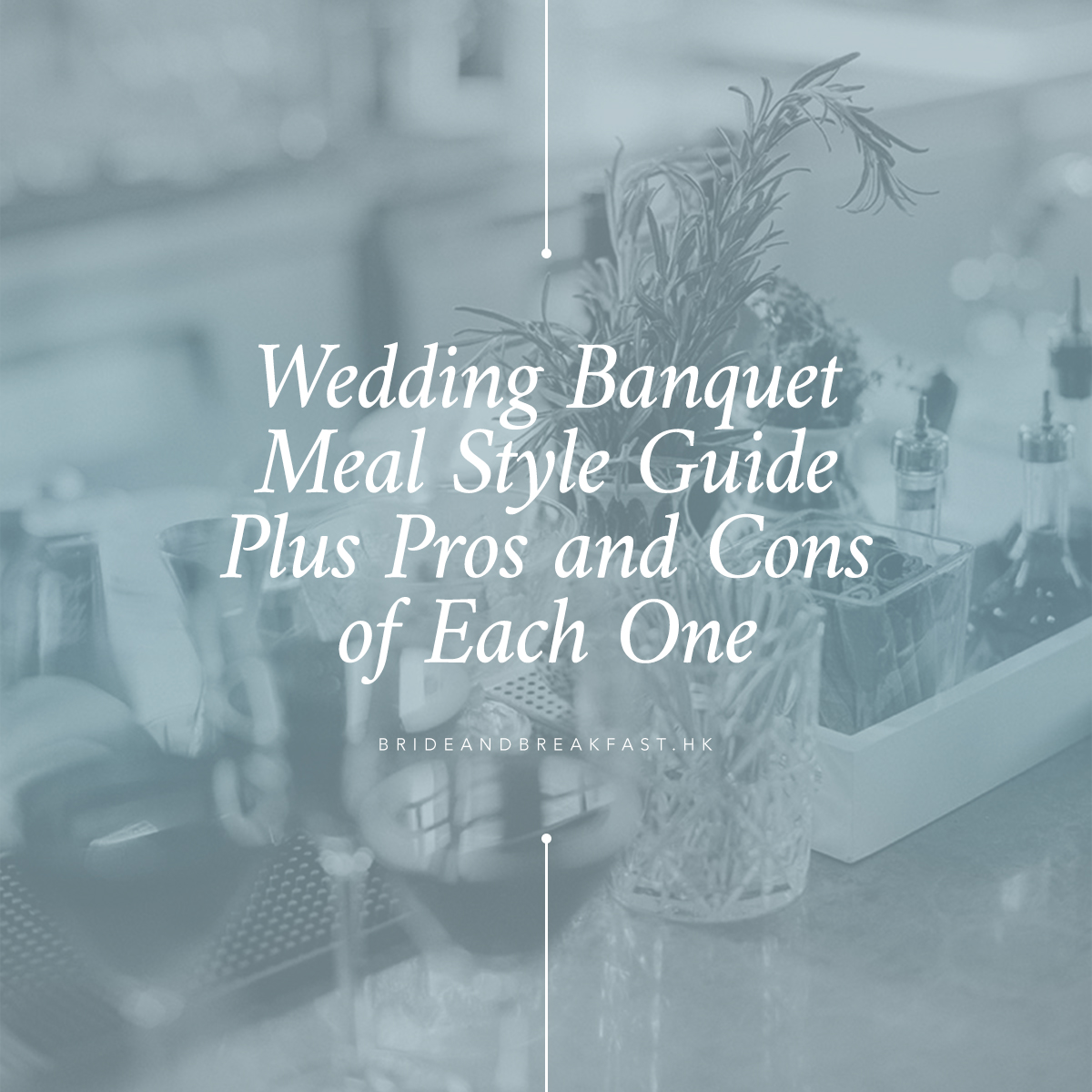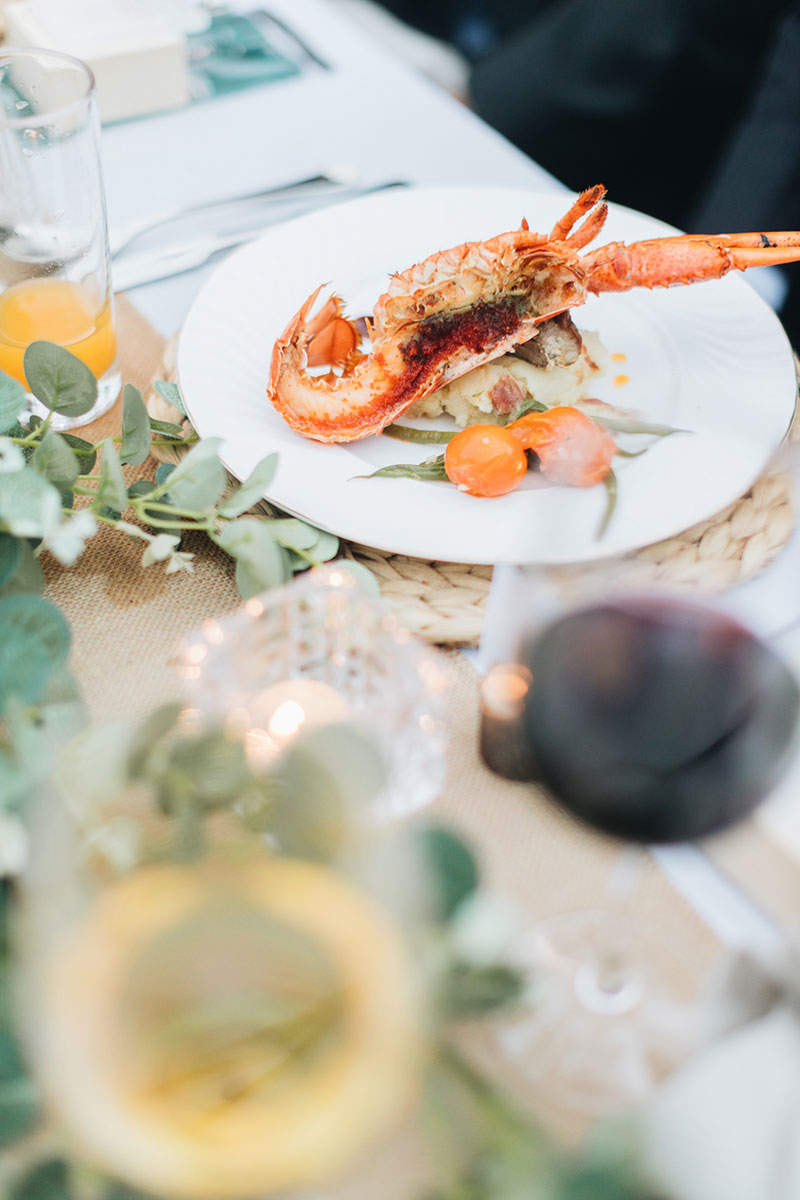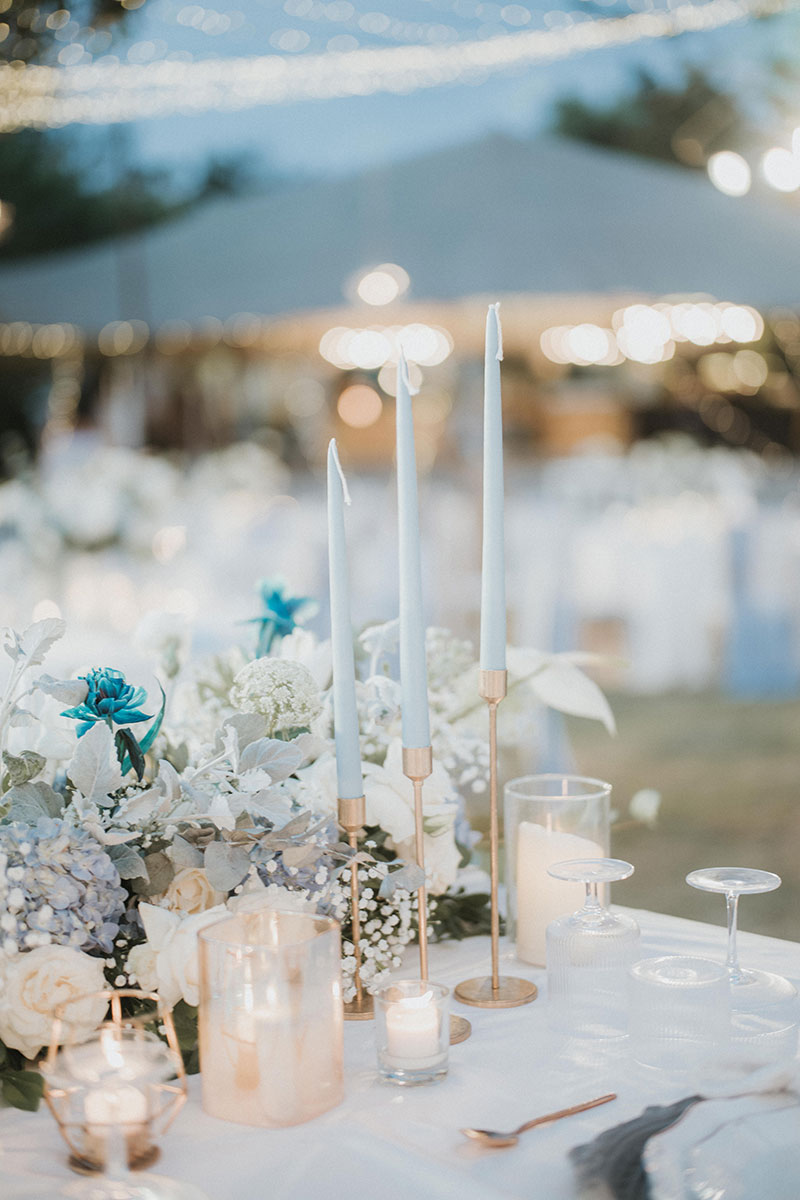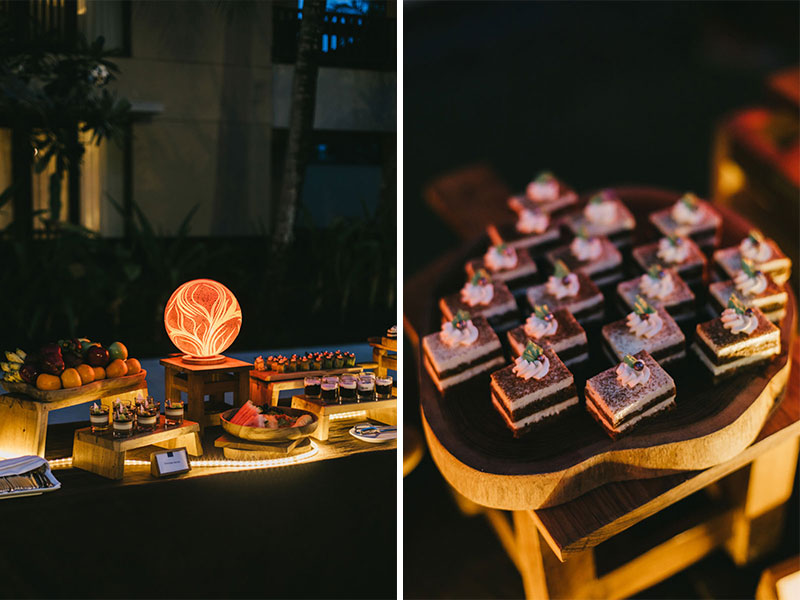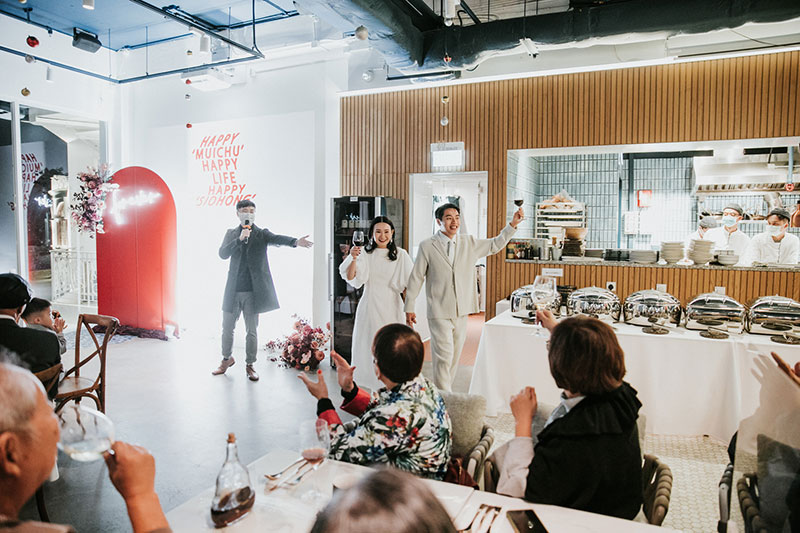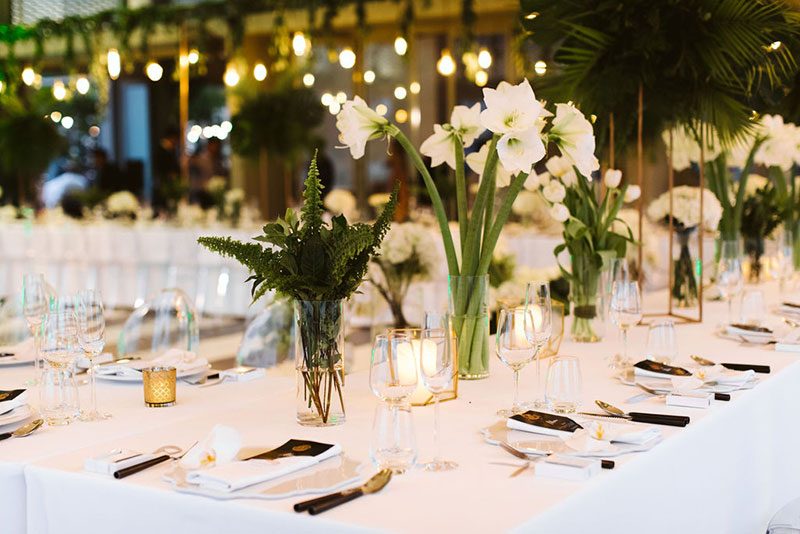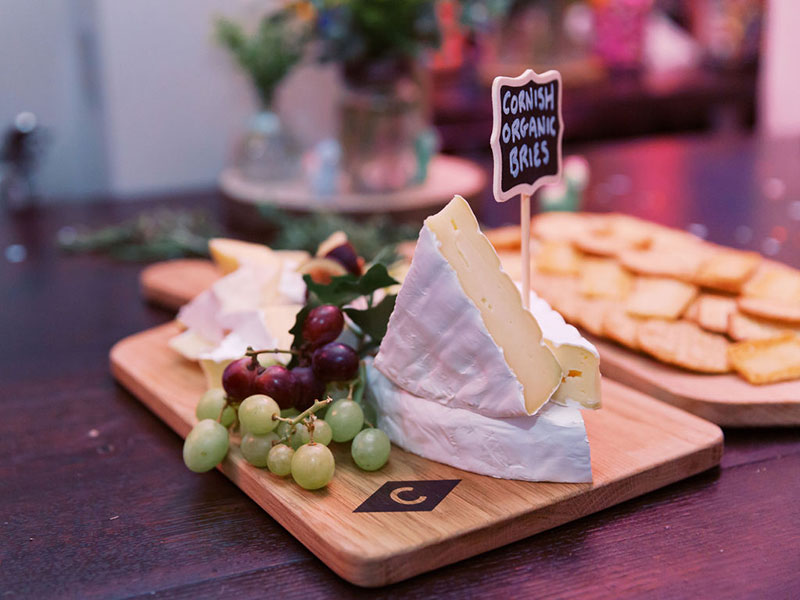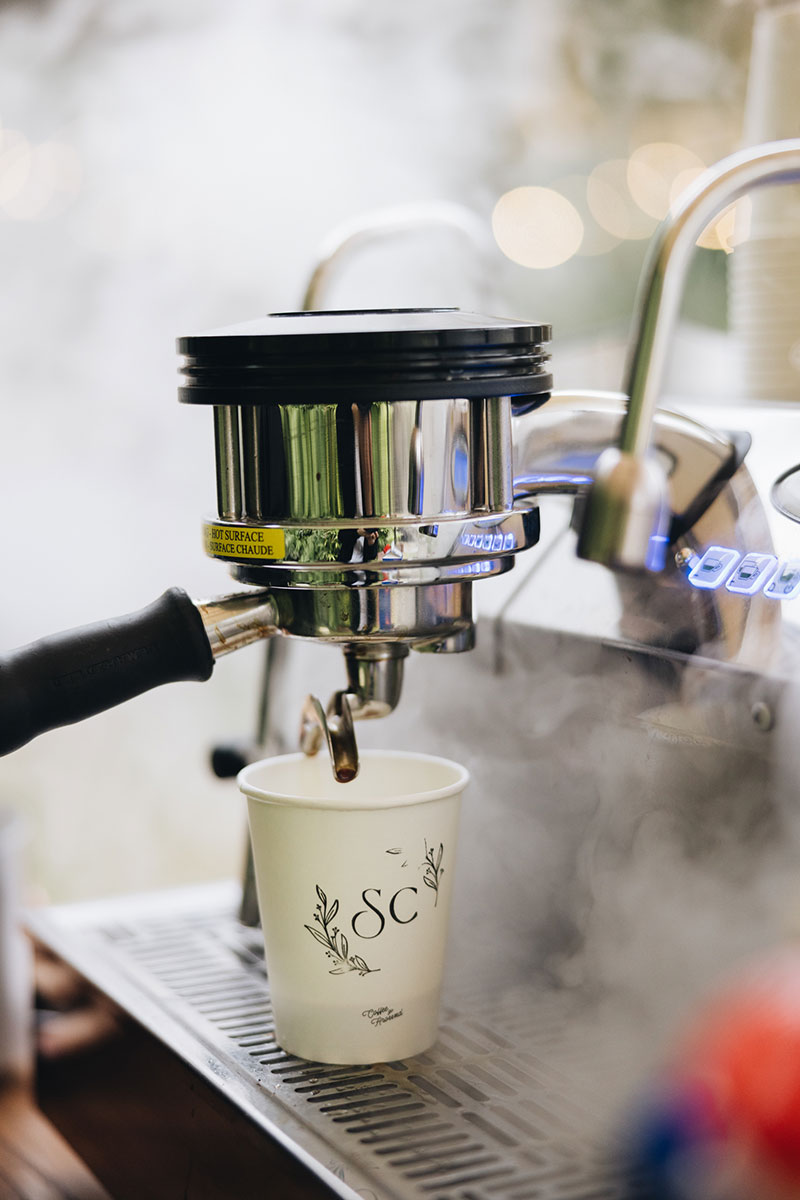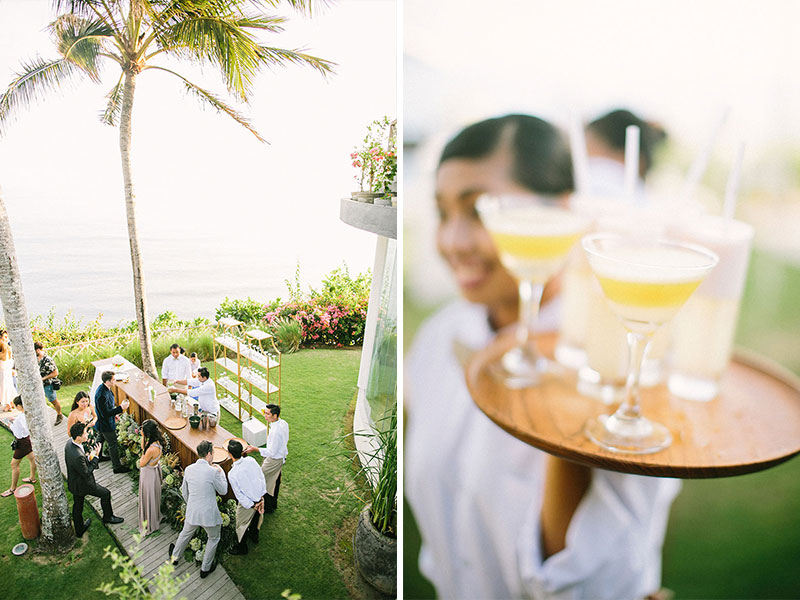Let’s talk about wedding food. Yes, this is the one detail that many guests really look forward to when attending the wedding–aside from seeing you marry the love of your life, of course! Now, the wedding banquet food usually makes up a big chunk of your total expenses, so choosing the right food and beverage package is quite important. You’ll want to ensure that everyone leaves the wedding with a full heart and tummy!
One of the major decisions you’ll need to make when choosing your wedding banquet food and beverage package is the meal type or style: sit-down style, buffet, family style, cocktail, and so on. Here’s a quick guide to help you learn about each type, complete with essential pros and cons to help you decide which suits your celebration.
(1) Sit-Down
[From: A Romantic Blue Wedding Overlooking the Mountains / Photo: Mary Ann Art & Photography]
[From: Well-Thought-Out Details Made This Garden Wedding Stand Out / Photo: Hyvis Tong]
[From: The Dreamiest Dusty Blue Garden Wedding You Can Imagine / Photo: Iluminen]
A sit-down dinner or meal, also known as a plated meal, is a traditional formal meal style that includes three courses served directly to guests while they are seated. The three courses are the appetizer, entrée, and dessert. Some couples may opt to add an extra course, called the intermezzo or amuse bouche, which is served before the main entrée. Sometimes the guests may choose their entrée or couples may choose to serve a duet plate with two viands, fish and chicken. Serving two entrées is also possible!
PROS: Guests can enjoy all the food which will be served to them in their seats–no need to stand up to get food! Caterers will also have an exact amount of pre-selected food which may come out cheaper compared to buffet or family-style meals which usually work with a bulk estimate.
CONS: Plating and individual serving takes more time and requires more servers so this may also alter the cost a little. Since guests will need to wait for their servings, this also means you need to add some entertainment in between to keep them all engaged.
(2) Buffet
[From: A Romantic Bali Getaway / Photo: Fire, Wood and Earth Photography]
[From: This Bride and Groom Let Their Fun-Loving Personalities Shine During Their Wedding / Photo: Jeff Lee Pictures]
Buffet style meals are the most common type used in parties and gatherings because it’s casual and easy to plan. Caterers set up the food in one area and guests can serve themselves. Or, caterers may provide servers to assist in serving for each kind of food as guests pass by.
PROS: Guests can freely choose their food and even come back for more! You’ll also need less servers so you can save on changes for additional staff. Buffet style meals also offer more variety and options so you can cater to more palettes and food preferences.
CONS: Since guests need to get their own food, this can be a little inconvenient for them since the line can get long. This can also be a bit distracting if you have a program going on while people are eating. Buffet meals can also turn out more expensive since this requires ordering food in bulk.
(3) Family-Style
[From: An Intimate Wedding at City Hall and The Aubrey / Photo: Anna Maria Studio]
[From: A Modern Black, White, and Gold Themed Wedding in Phuket / Photo: Danae Herrmann]
Family-style meals are similar to sit-down meals. The main difference is that the food is not served individually per person. Instead, the servers lay down large portions of food on the table and guests may serve themselves. It’s very similar to serving food at home with family.
PROS: Just like a buffet, guests can choose the food they like, serve themselves, and even get seconds. To add to that, they need not stand up either.
CONS: This options will require larger tables that can accommodate the guests and the large portions of food. Similar again to the buffet, this option can be more costly since caterers will work with bulk quantities.
(4) Food Stations
[From: A Colorful and Creative Garden Wedding Complete Sunflowers and Cute Alpacas / Photo: Terry Li]
[From: A Colorful and Creative Garden Wedding Complete Sunflowers and Cute Alpacas / Photo: Terry Li]
[From: Well-Thought-Out Details Made This Garden Wedding Stand Out / Photo: Hyvis Tong]
In an event with food stations, the food is spread around the venue into “stations” (as the name suggests) and guests can help themselves in each stations. Some examples include a carving station, raw bar, tapas station, dessert station, and so on. Food stations can be standalone stations serving the main meals, add-ons to a buffet, or they can also be used to feed guests with light snacks during the cocktail hour.
PROS: Food station can be very fun, especially if couples inject themed food stations. Food stations also allow more variety and creativity.
CONS: First of all, your reception venue will need to have enough space to house all the food stations. You may also need more chefs to cook or prepare the food in each station, which may again drive up costs.
(5) Cocktail
[From: A Romantic Clifftop Wedding Overlooking Lake Toya / Photo: Juno Inc]
[From: Luxurious Greens Surround This Breathtaking Bali Wedding / Photo: Saya Photography]
[From: A Heartwarming Restaurant Wedding at Madame Fù Grand Café Chinois / Photo: Patrick Photography]
Cocktail style food service is common during cocktail hour, but with the advent of very intimate weddings, this has also been adopted as a meal style. In this setting, hors d’oeuvres and other small bites offered all evening long in place of a sit-down meal. The hors d’oeuvres can also be served by waiters or may be available in stations, much like the food station style, so guests can grab food on their own.
PROS: This is a very relaxed and casual setting and is perfect if you just have a handful of guests; it allows more socialization. You can add lunge areas so people can still sit from time to time. This option may also be more affordable since you’re not serving main meals.
CONS: Since this is a new setting, some guests might be confused and might anticipate a full meal. To avoid confusion, make sure to include clear details in your invitations–state that you will be having a “cocktail reception.” Beverage costs might also be on the high for this option, especially if you will go for a cocktail-style setting with free-flowing alcohol.







